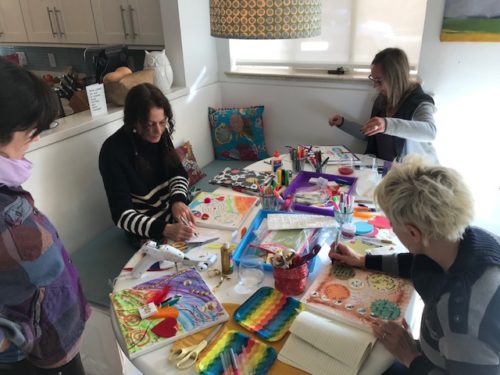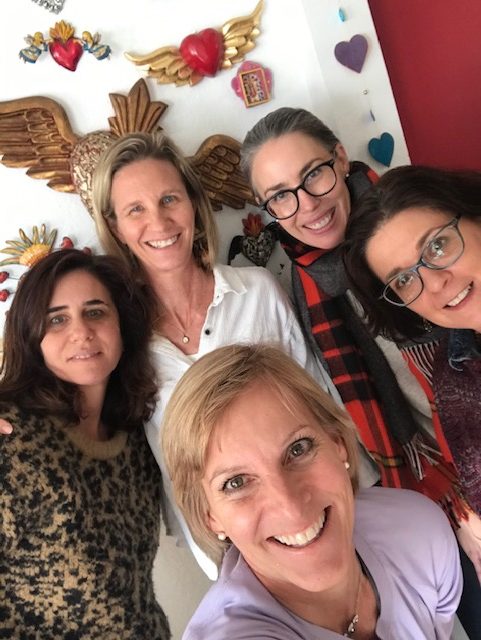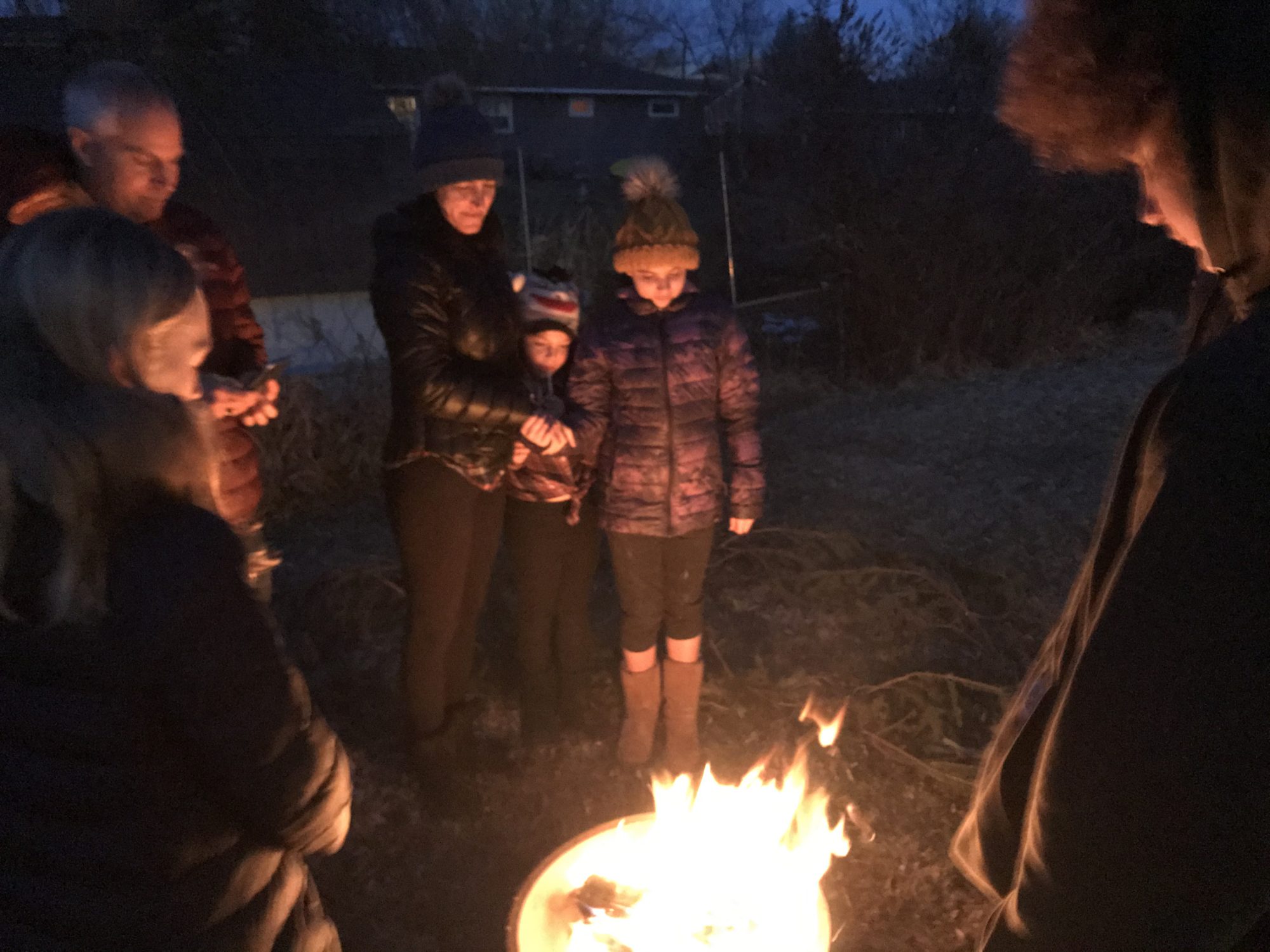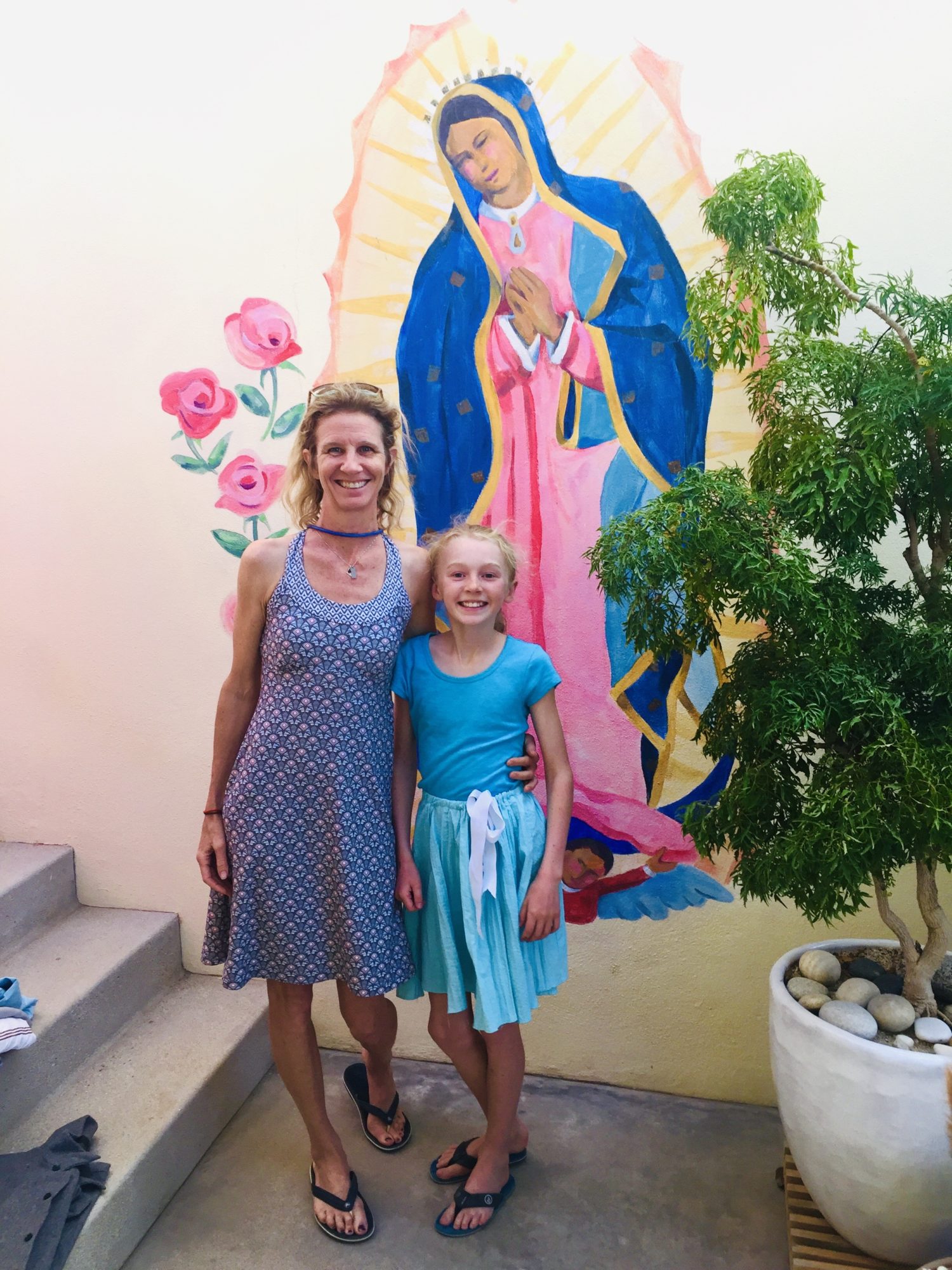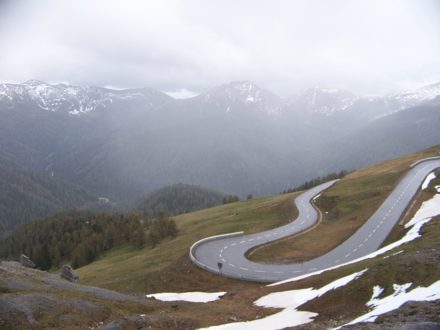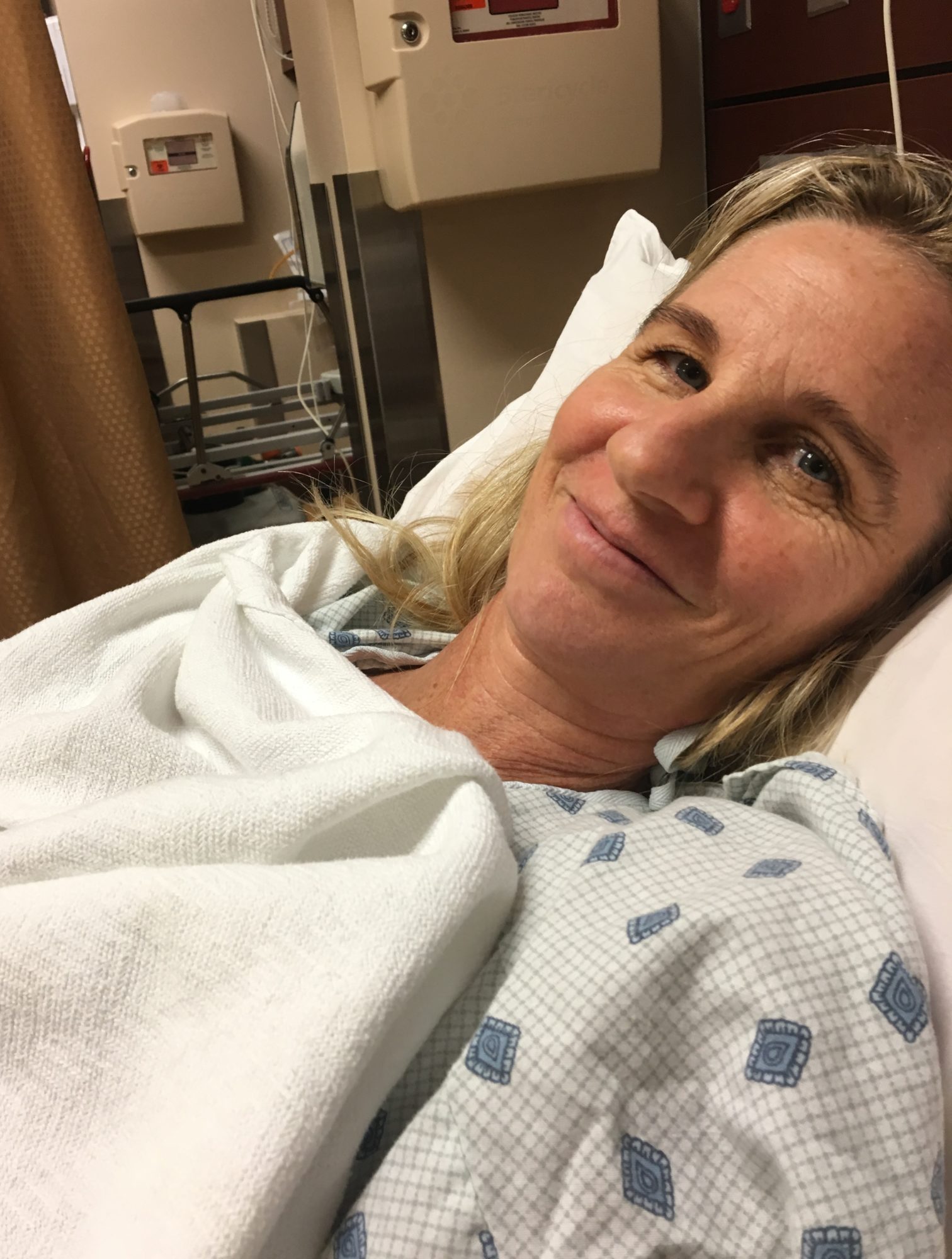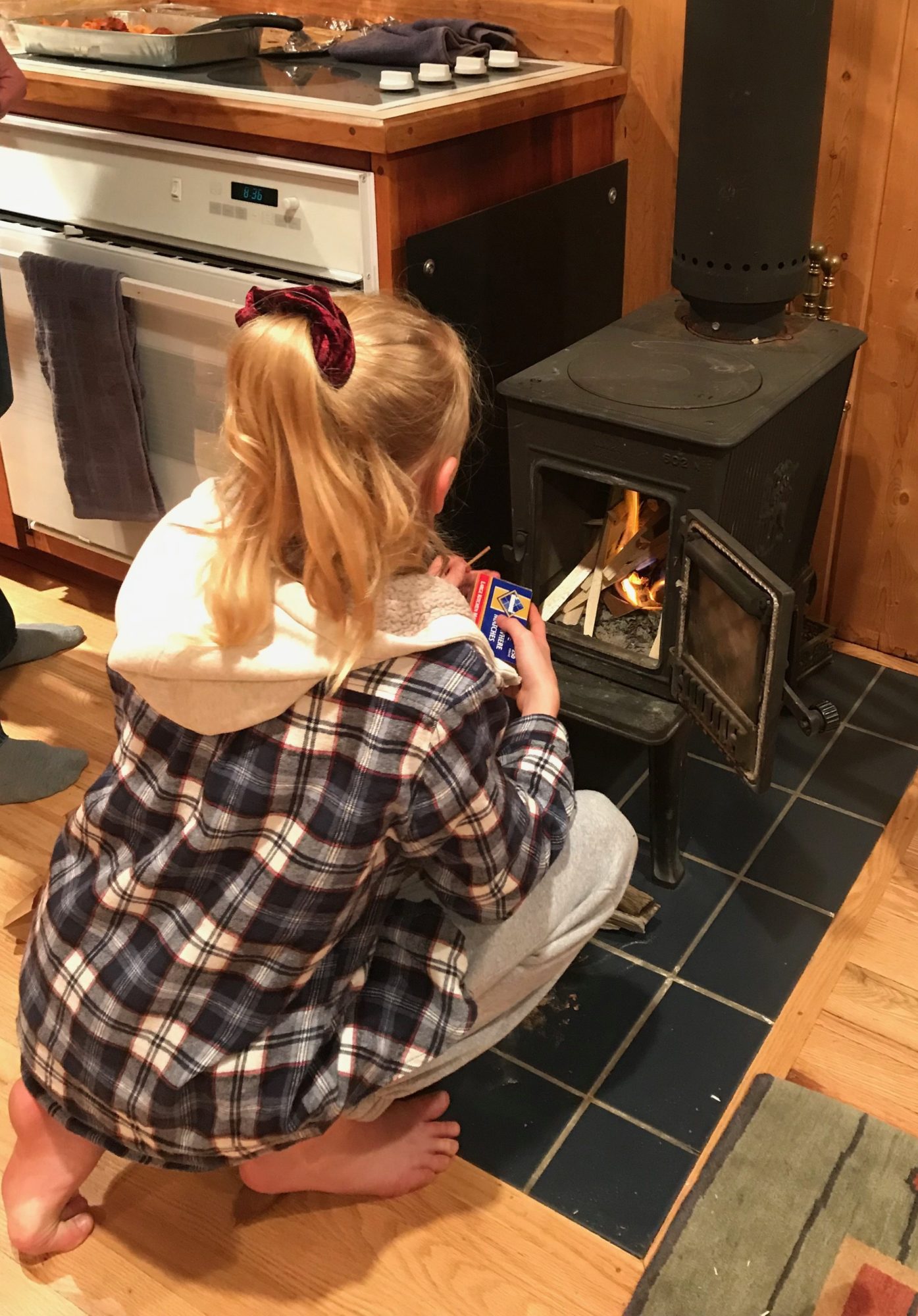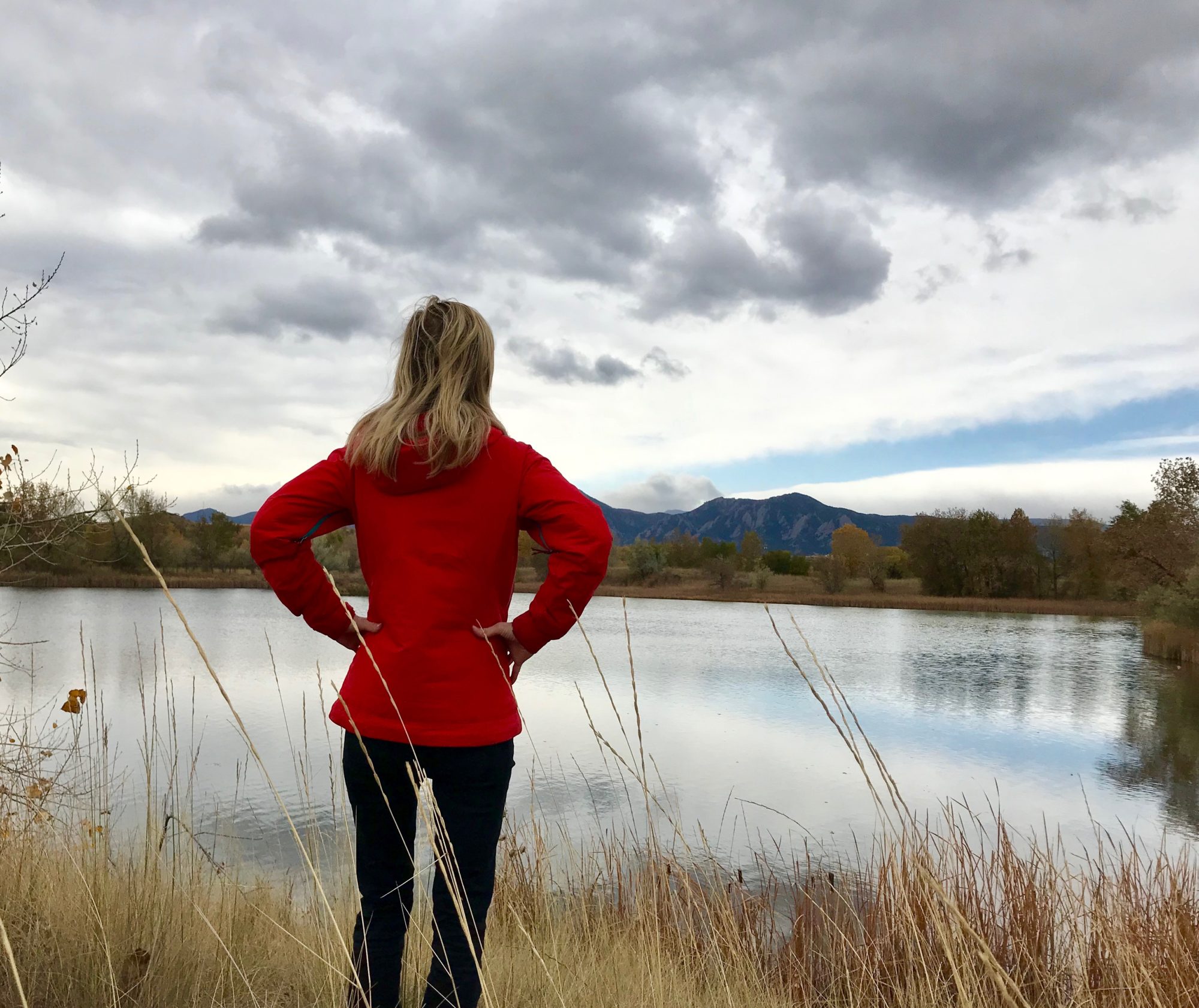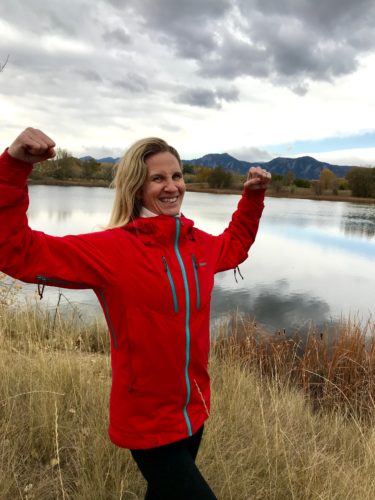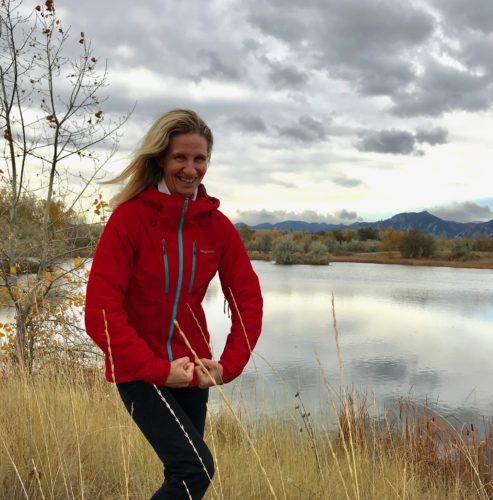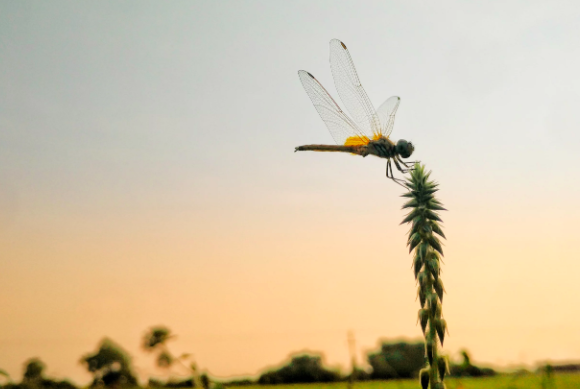Our daughter Hazel is 14 today. It is also Día de Guadalupe. I am republishing this blog about Guadalupe, and the strength of women around the world in her honor!
Hazel’s birthday falls on the same day Mexicans celebrate the Virgin Mary, whom they lovingly call La Virgen de Guadalupe. It’s an important day in Mexico; Pilgrimages, parades, and dazzling fireworks are common and abundant. Hazel has adopted it as her own holiday. Every year, we join the large, hispanic congregation in the Catholic church to dance and sing at sunrise to celebrate this powerful woman.
I wake Hazel up at four thirty. She crawls out of bed and puts on her jacket and snow boots. We walk hand in hand, in the middle of the street, through the darkness, to the church a few blocks away. When she was younger, I wrapped her in a sleeping bag and carried her. One year, I pulled her in a sled through the heavy snow.
The legend goes that Guadalupe appeared to Juan Diego in rural Mexico in 1531, at sunrise. When the bishop didn’t believe the story that this powerful woman would appear to a poor native, Diego unfolded his cloak. Rose petals scattered on the floor, revealing a clear image of la Virgen, a young woman in a mantle made of stars, surrounded by light. Ever since then, Mexicans trust that they are under the Virgin Mary’s special protection.
Hazel and I walk in silence, watching the snow sparkle under the streetlights. Everything else is dark. I lead the way past the middle school and to the top of the hill. Then as soon as we crest the hill, we hear the drumbeat, a steady boom boom boom cutting through the icy darkness. Hazel takes the lead and runs toward the dancers and music.
At the church, it feels like Hazel and I have gone through the back of a wardrobe and into a different world; one full of bright colors, lights, and the music of drums and accordions. Parking attendants do their best to find places for the steady river of Chevy pick-up trucks. Grown men parade in through the doors and kneel to pray, wearing white jackets with sequined images of Guadalupe on the back. As soon as we sit down, children and teenagers in beaded costumes dance down the center aisle, shaking the leg rattles attached to their ankles. Hazel and I try to count the number of people awake before dawn, filling the church. Five hundred people? Four hundred, at least.
Long ago, when I am pregnant with Hazel, I go into a used furniture store looking for a bed and come home with a painting. It is a very large portrait of Guadalupe wearing a blue cape covered in stars and surrounded by golden light. I buy it. I don’t know why. I am drawn to her calm beauty and the fact that she is a young woman.
At home, I hang the painting over the hallway in our apartment. As I do laundry or try to reason with Cole, our toddler, I talk to Guadalupe, “Can you give me a hand through bedtime? Or I may start drinking heavily and that would be bad for the baby.” At the time, Kurt is living two hours away, on a job that involves tracking wildlife, while I am the assistant director at a residential school in Vermont. I am alone at home, responsible for our two year old boy and the twelve teenage boys who live directly above me, in one of the five dormitories on campus.
As my due date comes and goes without any sign of having this baby, I talk to Guadalupe nightly. It is as if she is on the other end of a phone line. I beg, “What is the baby waiting for? Can you make her come out, NOW?” When a week goes by and still no sign of labor, I say, “I’m scared. What if this baby isn’t healthy? I don’t know if I can handle that.” She just listens quietly. In my world of toddlers and teenagers, it feels good to talk to an adult, even if she is a painting. At a time when I am feeling alone and unsure, Guadalupe’s mature, female energy is welcome. To me, she represents deep love and faith in the unknown.
My water breaks during a dorm meeting. I stand up to say goodnight to the boys and water pours out of me onto the floor. The boys panic. Teenage boys panicking doesn’t look like much. There is a rare moment of silence, then everyone runs away. One boy, Jake, is sweet enough to walk me down the stairs to my apartment. But he keeps muttering, “I don’t know how to deliver a baby. I don’t know how to deliver a baby.” I call Kurt. He drives two hours home through a snowstorm and we make it to the hospital just in time.
Hazel is born early in the morning on December twelfth. She comes out screaming. Minutes after she is born, I discover that it is Guadalupe Day. I watch the sunrise pink through the window and sing to this tiny baby to soothe her. I picture the rays of light reaching out from Guadalupe and surrounding Hazel with protection.
Then my dear friend Teza calls from Collingwood, Ontario. We were pregnant at the same time, but my due date was two weeks before today and hers was a week after.
Teza says, “It’s a girl!”
“I know!” I say back, confused, thinking that she is calling to congratulate me.
But she is announcing the birth of her own daughter. What are the odds of best friends having their daughters on the same day, and not just any day, but the one devoted to Guadalupe?
I want to know more about the Virgin Mary, so I read up on her while I nurse. It surprises me to learn that Muslim men and women are as devoted to her as Catholics. She is the only woman mentioned by name in the Koran. In fact, her name appears more in the Koran than in the New Testament. It’s not unusual to see young Muslim women in hijab visiting the Virgin Mary at Christian shrines, for example. Muslim and Christian, men and women alike, speak of the Virgin’s resilience and her example of love. Hazel, and Teza’s daughter, Rozlyn, are in good hands. The Virgin Mary might be the most powerful woman in the world, a true force for unity and peace.
When I received the tumor diagnosis, I prayed awkwardly to Guadalupe for help. But this is not the story of how I prayed to Guadalupe before labor, and again before my surgeries and promised that I would go to church every week if I came out alive. No, this is the story of how I am living each day as though I may die tomorrow and therefore I am no longer afraid to say I believe in Guadalupe. Before, when I talked to the painting, I was too chicken to tell anyone that I prayed to Guadalupe. I assumed my friends would smile politely, but never speak to me again.
I am not afraid anymore. Why hide it? What I’ve learned throughout these challenging months is that it is silly to hold back love. I still don’t know where I belong spiritually; I have shopped for the right church/temple/sangha/mosque for years. But I do know that I can easily, without effort or artifice, kneel before the divine presence of the Virgin Mary. She is a woman who stands for love. She is for all people, no matter their background or religion. Her compassionate gaze doesn’t suggest that one way is the only way, but instead finds room for all of our beautiful brokenness.
This morning, Hazel and I stay in the church to watch the dancing, and the offering of candlelight and flowers. We also stay for the singing. We watch the mothers next to us bring their bundles of roses to the front. They lay them at the statue of Guadalupe’s feet and show their babies the candlelight. They return to the pew. We stand together, women and girls. One woman gives me a big smile because now even I am singing! Hazel laughs, but I keep singing. It feels easier, lighter than before. I let go of fear, and make room for joy.
Love,
Susie
***
I’m baaack coaching and speaking again! I’d love to help you thrive and let go of the fear standing in your way of being powerful. I’ve also crafted a 45-min keynote on how people and organizations can let go of perfectionism and thrive in turbulent times. Do you know an organization or conference that needs this message? Get in touch with me.
